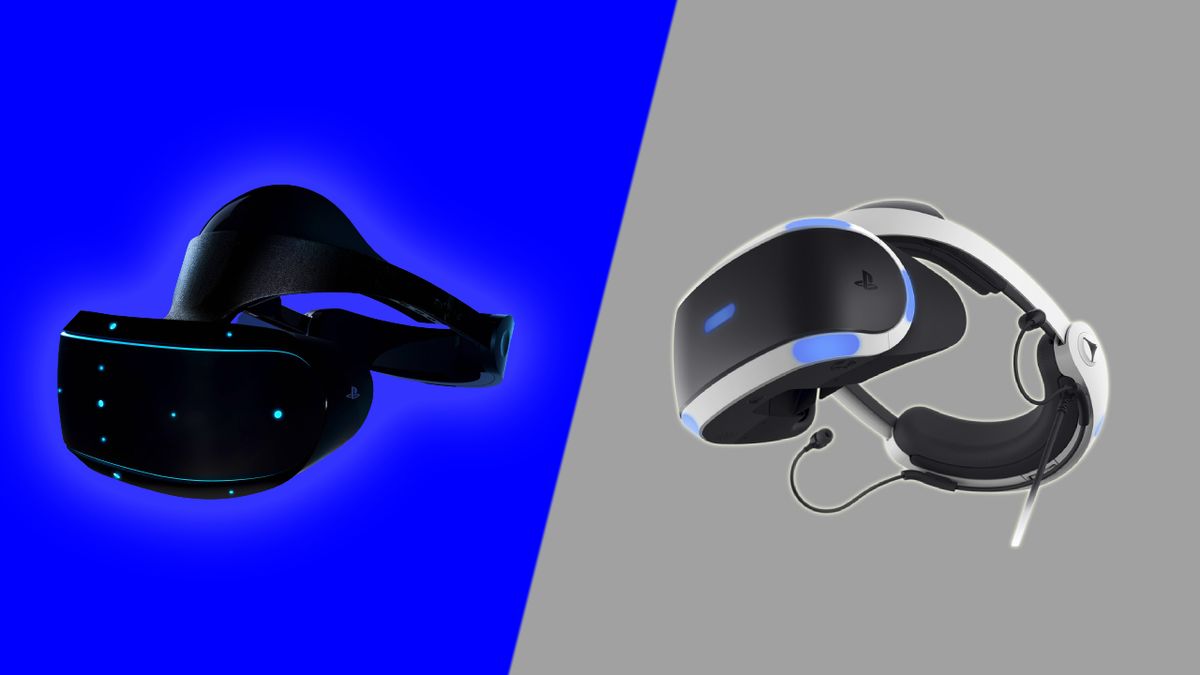Products You May Like
While we’ve still yet to see the PlayStation VR 2 headset, aka the PSVR 2, in the flesh, this week saw Sony confirm the key specs for its PS5 virtual reality device at CES 2022. But one key feature of the PS5 add-on was notable for its absence: there was no mention of backwards compatibility with original PSVR titles.
Sony instead focussed on the new features of the headset – its 4K HDR OLED display, 110-degree field of view, 90Hz / 120Hz refresh rates and “new sensory features” including haptic feedback in the VR device.
When pushed for clarification on PSVR 2’s backwards compatibility status by games journalist Stephen Totilo, Sony’s public relations representative merely stated that “they have nothing further to announce at the moment.”
But with backwards compatibility such an easy PR win for the upcoming headset, you’d be forgiven for worrying about the reasoning not to discuss it as soon as possible in the headset’s hype cycle.

It’s unusual, given the fanfare and gratitude-filled reception Sony received from players when it confirmed that the PS5 would be backwards compatible with 99.9% of PS4 titles. You’d imagine that Sony would have been, as a result, equally bullish about confirming backwards compatibility support for PSVR 2 as early as possible, which points to a worrying conclusion that the PSVR 2 is not backwards compatible at all.
Making PSVR 2 backwards compatibility happen
Certainly, there are a number of key differences that will need to be considered for backwards compatibility to be possible.
First of all, Sony would need to decide how to scale the lower-resolution games to a higher-end new display unit. On top of that, the tracking system used by the original PSVR used an external camera and on-headset lighting to help track player movements, while PSVR 2 uses inside out tracking – something that would require further development work to be compatible on the new headset.
And finally, the new Sense controllers seem drastically different to that of the wand-like PS Move controllers PSVR 1 relied upon, not to mention the differences between the DualShock 4 and DualSense pads.

These aren’t insurmountable differences, but it certainly doesn’t seem as though the two systems and the legacy software will be compatible right out of the box. An investment in further development patches seems certainly necessary if backwards compatibility is at all possible, but how many developers will make or be encouraged to make that investment is uncertain.
Even PSVR-compatible games that have already received PS5 upgrades, like Hitman 3 and No Man’s Sky, have seen their PS5 versions of the game drop support for the original PSVR.
Players instead have to download the PS4 versions of the game onto their new consoles in order to access PSVR functionality. Whether or not that’s to facilitate a PS5 / PSVR 2 version later down the line remains to be seen, but Sony’s cross-generation approach to VR is already causing headaches. Indeed, to even use the original headset on the new generation console hardware, a player has to first order a PSVR adapter for the newer machine, as it doesn’t natively support the VR device through its onboard ports. Some PSVR titles, such as Robinson: The Journey, isn’t compatible with PS5 in any manner whatsoever.
Legacy libraries
When it comes to hardware changes for other virtual reality software libraries, the transition has been less painful. Mostly that’s down to the fact that, all-in-one headsets like the Oculus Quest 2 aside, the majority of virtual reality play takes place on PC.
Here, for the most part, game libraries can be carried over from one headset to another with relative ease, with key platforms like Steam VR and Oculus VR being supported by a large number of headsets. In the instances where compatibility between PC VR headsets and titles isn’t available, a hardcore modding community often has been able to find workarounds or fixes to make most software compatible with most PC VR hardware.

But with the case of PSVR, it’s very much part of Sony’s walled eco-system. Your PSVR library can’t be magicked over to a PC – though there are of course many multi-platform VR titles, owning them for PSVR and PC would require a separate purchase. And in the case of top drawer PSVR exclusives like Astro Bot: Rescue Mission, Farpoint or Blood and Truth, these titles (currently) just aren’t available anywhere else.
Will Sony patch these games for PS5 and PSVR 2? That’s possible, but Sony’s hit-and-miss approach to paid-for next-gen upgrades from PS4 to PS5 software may mean that loyal PSVR fans may still have to pay a stipend for access to any potential upgrade that may come.
As it stands then, original PSVR owners, those whose investment has made this PSVR 2 device possible, will be left holding onto the PS4 consoles and ageing PSVR hardware in order to play their existing VR catalogues. Sony would do well to reassure its most ardent VR fans that that won’t be the case, or run the risk of alienating those most likely to dip into its next-generation of VR hardware.
